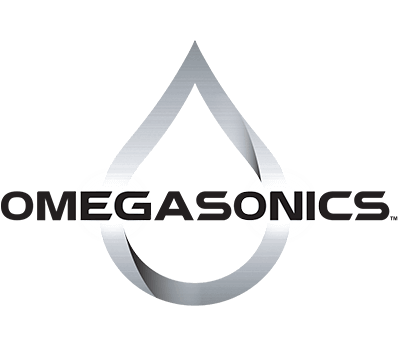So, what is a surfactant?
Surfactants are substances that when added to a liquid, reduce its surface tension. Detergents are one type of surfactant, and when they are added to water, they increase its spreading and wetting properties. Basically, surfactants make water “wetter,” making it better able to penetrate and lift away grime and dirt from surfaces. Detergents contain a surfactant, or mixture of surfactants, which lowers the surface tension of a liquid when the detergent is dissolved within it.
Surfactants Make Cavitation More Effective
First, a brief word on how ultrasonic cleaning works. This revolutionary cleaning process starts with a piezoelectric transducer which vibrates a diaphragm that in turn sends ultrasonic sound waves through a liquid bath. The parts to be cleaned are immersed in the liquid.
When ultrasonic waves move through water, they cause rapidly alternating expansion and compression within the liquid. During the expansion phase, also known as the “rarefaction cycle,” small vacuum bubbles are formed, then violently collapse as the rarefaction cycle ends. These vacuum bubbles are known as cavitation bubbles, and they are the power behind ultrasonic cleaning.
As these cavitation bubbles violently collapse, they emit streams of plasma at speeds of more than 500 miles per hour. These streams then remove and agitate the tiny substances and particles on the surface of the part you are cleaning without damaging the part surface underneath.
How Surfactants and Ultrasonic Cleaning Work Together
When surface tension is reduced, cavitation levels increase. More cavitation means more cleaning power. Thus, the addition of an ultrasonic cleaning detergent into the ultrasonic cleaning medium (generally water) increases the overall effectiveness of the ultrasonic cleaning process.
Ultrasonic cleaners tend to use deionized water to keep mineral buildup at bay. However, deionized water has a high surface tension, and because the ultrasonic cleaning process relies on cavitation, the higher surface tension means that producing the cavitation effect is more difficult. Another consideration is that most electronic assemblies have small spaces into which deionized water cannot easily penetrate.
It is, therefore, a good idea to use a detergent containing surfactant that is both formulated for ultrasonic cleaning and is appropriate to the grime to be removed and the materials to be cleaned. Of course, with electronics, it is also necessary to ensure that the frequency and power levels of the cleaning equipment are appropriate for electronics.
Overall, the key to ultrasonic cleaning solutions is that surface tension is reduced in the cleaning tanks with a cleaning solution. This allows the small bubbles to hold more energy and also makes ultrasonic cleaning more effective. Since the cleaning solutions, called surfactants, are designed to reduce surface tension instead of break chemical bonds, they are typically very mild and environmentally friendly.
Omegasonics Detergents
Keep in mind that for each specific type of cleaning job, you may need to select a different detergent, formulated specifically for that purpose. Fortunately, Omegasonics has a wide variety of different detergents designed using the latest chemical technology, and, wherever possible, are more environmentally friendly than most industrial detergents. Added to Omegasonics industrial ultrasonic cleaners, they provide an unbeatable combination of cleaning power. Each Omegasonics cleaning solution contains detergents designed to intensify the cleaning effects beyond what ultrasonic cleaning alone can do.
Trying to find the best ultrasonic cleaning solution for your application or have other questions regarding ultrasonic cleaning? Contact our consultants at Omegasonics by calling 888-989-5560, emailing us at , or by filling out our online contact form.

